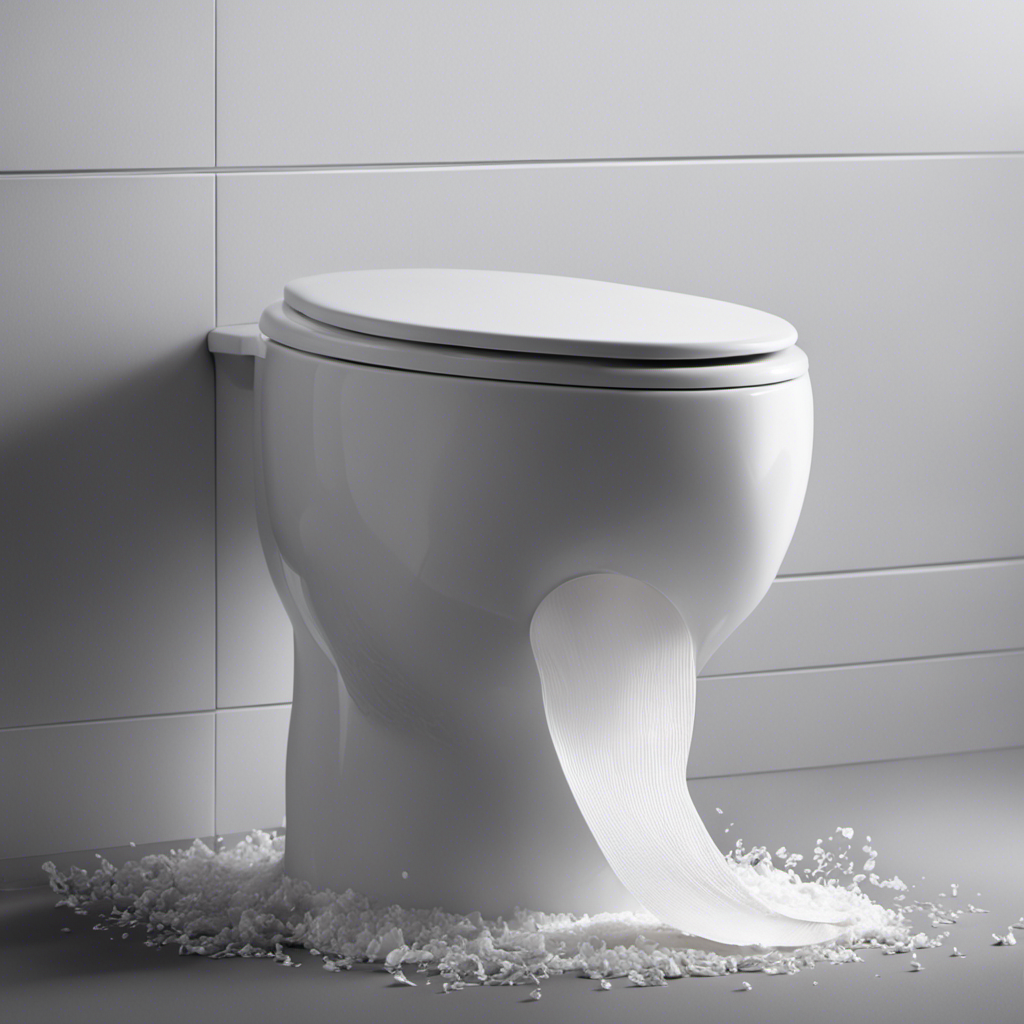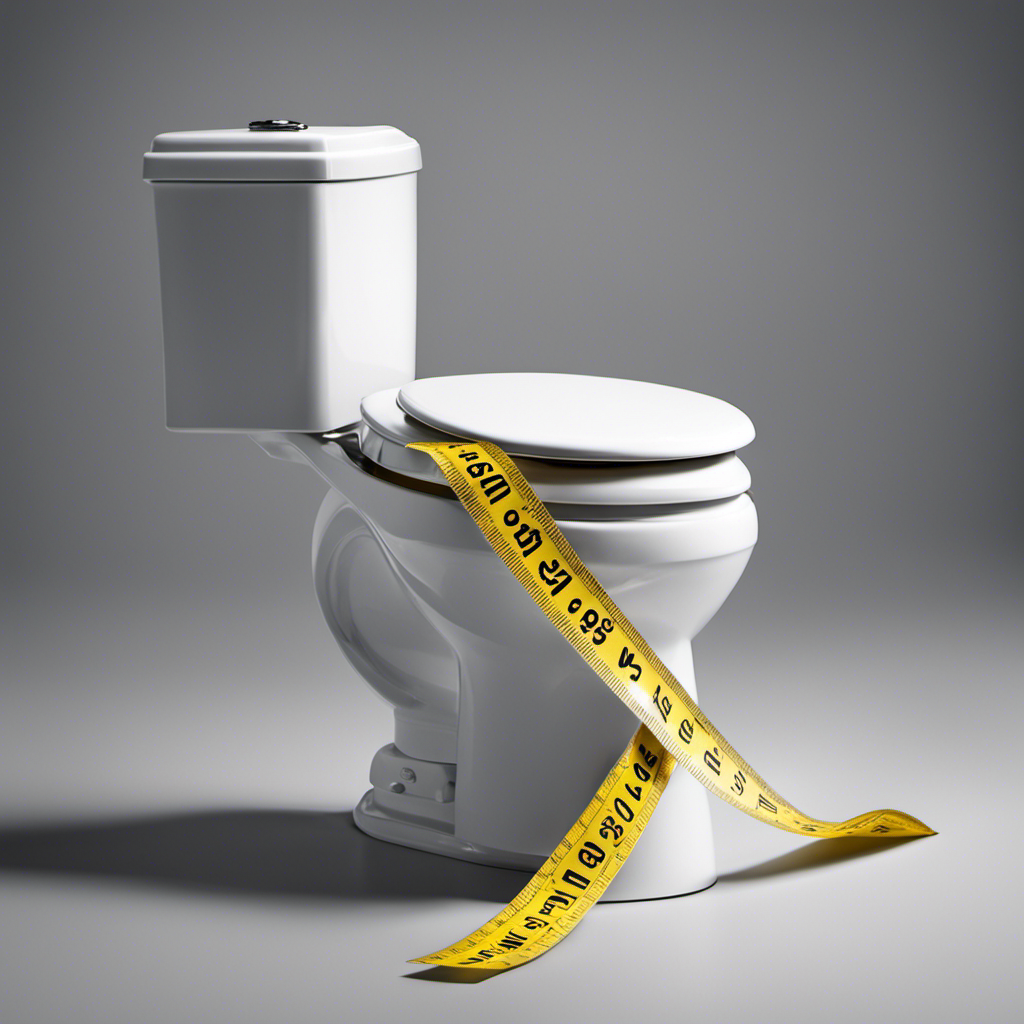I’ve always wondered how long it takes for toilet paper to dissolve. It’s a question that may seem trivial, but it’s actually quite important when considering the environmental impact of our choices.
In this article, we’ll delve into the factors that affect toilet paper dissolvability, explore the testing methods used to measure it, and reveal the average dissolving time of common brands.
Additionally, we’ll discuss the environmental consequences of non-dissolvable toilet paper and provide tips for choosing a more eco-friendly option.
Let’s dive into the fascinating world of toilet paper dissolvability!
Key Takeaways
- Flushability standards determine how easily toilet paper disintegrates
- Water quality, such as hard water and pH level, affects toilet paper dissolution
- Choosing the right toilet paper based on these factors prevents clogs and damage
- Understanding dissolving characteristics helps avoid costly repairs
Factors Affecting Toilet Paper Dissolvability
If you’re wondering about factors that affect how quickly your toilet paper dissolves, there are a few things to consider.
Flushability standards play a crucial role in determining how easily toilet paper disintegrates. These standards ensure that the toilet paper breaks down sufficiently during the flushing process to prevent clogs in the sewage system.
The impact of water quality is another significant factor. Hard water, for instance, contains minerals that can inhibit the dissolution of toilet paper. Additionally, the pH level of the water can affect the disintegration process. Water with a higher pH level may slow down the breakdown of toilet paper.
Understanding these factors is essential for choosing toilet paper that meets flushability standards and performs optimally based on your water quality.
Now, let’s delve into the testing methods for toilet paper dissolvability.
Testing Methods for Toilet Paper Dissolvability
One way to test how quickly toilet paper breaks down is by using different dissolvability methods. By comparing the dissolvability of different types of toilet paper, we can determine which brands or materials are more likely to break down quickly in the sewer system.
Here are four important testing techniques for evaluating toilet paper dissolvability:
-
Water immersion test: This method involves submerging a sample of toilet paper in water and observing how quickly it disintegrates.
-
Agitation test: In this test, the toilet paper is subjected to vigorous shaking or stirring to simulate the movement it experiences in the sewer system.
-
Acid test: By exposing the toilet paper to an acidic solution, we can assess its ability to dissolve under harsh conditions.
-
Mechanical stress test: This method involves applying pressure or friction to the toilet paper to mimic the forces it encounters during flushing.
Through these dissolvability comparisons, we can determine the best toilet paper options that are not only comfortable to use but also environmentally friendly.
Average Dissolving Time of Common Toilet Paper Brands
To determine which toilet paper brands dissolve the quickest, you can compare the average dissolving times of common options. The composition of toilet paper plays a crucial role in its dissolvability and its impact on plumbing systems.
Toilet paper is typically made from a combination of wood fibers, water, and chemicals. The fibers are responsible for the strength and softness of the paper, while the chemicals help break down the fibers during the dissolving process. It is important to choose a toilet paper brand that is designed to dissolve quickly to avoid clogging and damage to the plumbing system.
A thorough analysis of the average dissolving times of different brands will provide valuable insights into their performance and their potential impact on plumbing systems. Understanding the dissolving characteristics of toilet paper can help consumers make informed choices and prevent costly plumbing issues.
Transitioning to the next section, it is also essential to consider the environmental impact of non-dissolvable toilet paper.
Environmental Impact of Non-Dissolvable Toilet Paper
The environmental impact of non-dissolvable toilet paper is a concern due to its potential contribution to pollution and waste. Here are four key reasons why we should be worried:
-
Impact on marine life: Non-dissolvable toilet paper can end up in our oceans and waterways, posing a threat to marine life. It can entangle animals, disrupt their habitats, and even be mistaken for food.
-
Pollution: When non-dissolvable toilet paper is flushed down the toilet, it can clog pipes and sewer systems, leading to costly repairs and increased pollution.
-
Waste generation: Non-dissolvable toilet paper adds to the already growing amount of waste in landfills. It takes up space and contributes to the release of greenhouse gases.
-
Limited recycling options: Unlike dissolvable toilet paper, non-dissolvable varieties are not easily recyclable, further exacerbating the waste problem.
To minimize these environmental impacts, it is important to explore alternatives to non-dissolvable toilet paper and choose options that are more sustainable and easily biodegradable.
With this in mind, let’s now move on to some tips for choosing toilet paper that dissolves quickly.
Tips for Choosing Toilet Paper That Dissolves Quickly
When choosing toilet paper, it’s important to opt for varieties that break down quickly in order to minimize environmental impact. Choosing eco-friendly toilet paper options can have a significant positive impact on our sewage systems.
Non-dissolvable toilet paper can cause blockages and clogs, leading to costly repairs and potential damage to the environment. By selecting toilet paper that dissolves quickly, we can help prevent these issues. Look for toilet paper that is labeled as ‘septic-safe’ or ‘biodegradable.’ These options are designed to break down easily in water and reduce the strain on our sewage systems.
Additionally, consider using recycled toilet paper, which not only helps minimize deforestation but also tends to be more environmentally friendly. By making informed choices, we can contribute to a healthier planet.
Conclusion
In conclusion, the dissolvability of toilet paper is influenced by various factors such as thickness, fiber composition, and manufacturing techniques. By conducting rigorous testing methods, manufacturers can determine the average dissolving time of different toilet paper brands.
It is crucial to choose toilet paper that dissolves quickly to avoid clogging pipes and causing environmental harm. So, next time you reach for toilet paper, ask yourself, ‘Is this brand designed to dissolve efficiently?’ and make an informed choice for a hassle-free and eco-friendly bathroom experience.










